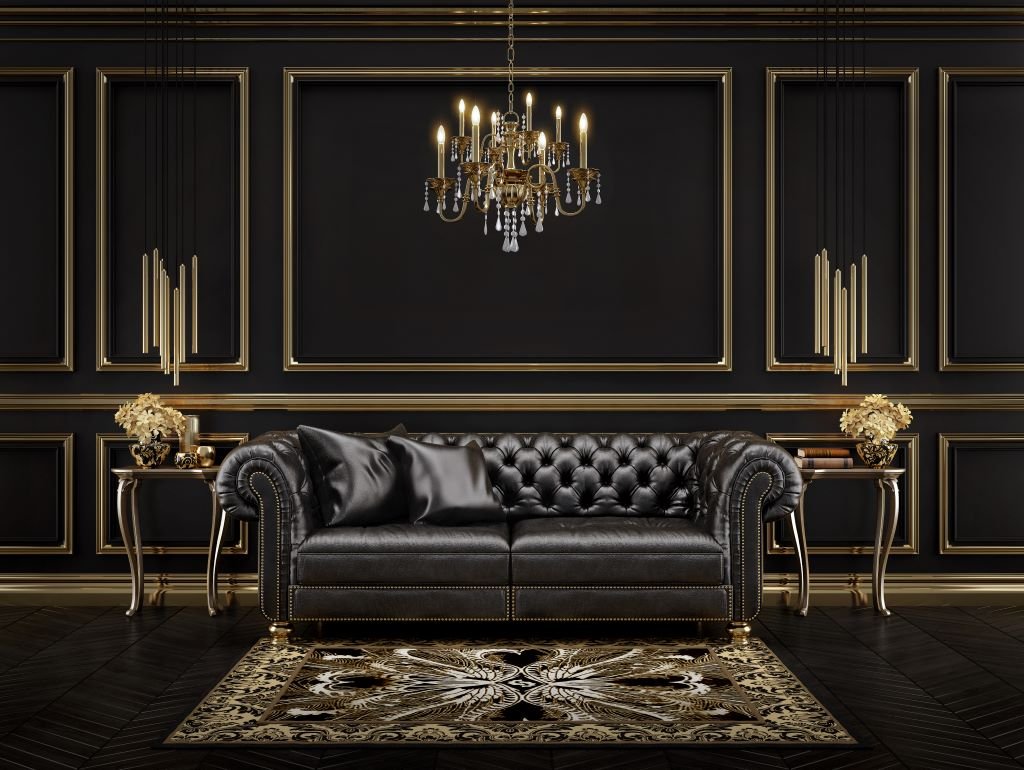A chandelier is a lighting fixture that hangs from the ceiling and consists of multiple arms connected to a central support. In most cases, it has glass or crystal at its center. Chandeliers can be made from materials such as metal, wood and porcelain but they are usually more elaborate than ordinary light bulbs or lamps because they use several types of lights together: hanging crystals give off light while others reflect it back into the room.
What Does a Chandelier Do?
Chandeliers are light fixtures that hang from the ceiling or walls and can be used to illuminate a room. They are often used in dining rooms, kitchens and living rooms as well as other areas of your home.
Chandeliers can be hung from the ceiling or wall; however, they are most commonly suspended from the ceiling. The size of a chandelier determines how much light it will emit: larger chandeliers produce more light overall because there is more space for all of its components (like crystals) to shine through! If you want something really big with lots of sparkle but don't want something that will take up too much space in your home then look at this list which contains some great options!
What are the types of chandeliers?
LED chandeliers
These are perhaps the most popular choice nowadays. They can be used in many different types of homes and spaces, including restaurants and bars.
Pendant Chandeliers
These are also a popular choice for many different types of homes and spaces. Pendant chandeliers are not flush mount ceiling lights. Hence, you can change their location by simply adding a hook on the ceiling, giving you the liberty to adjust its position as per your requirement. For example, if your living room has windows that face east but your master bedroom overlooks north, you can install these accordingly to give off ideal light in the rooms.
Crystal Chandeliers
Crystal is another material people often use when making their own glass art pieces out of metal or other materials with similar properties like crystal does; however, these pieces aren't usually made specifically for lighting purposes as much as they are decorative objects meant purely for enjoyment purposes only!
Tiered Chandeliers
These types of chandeliers are mostly used in big spaces and need a high ceiling height.
Where is the chandelier used?
Chandeliers are often used in dining rooms, kitchens, entryways and bedrooms. They're also a popular choice for bathrooms because they can add a bit of elegance to the space while still being functional.
They are often made with light-reflecting crystal or glass and are hung on chains, wires or rod fittings.
The chandelier is a fixture that hangs from the ceiling and often consists of multiple lights. Chandeliers are usually made with light-reflecting crystal or glass and are hung on chains, wires or rod fittings.
Chandeliers come in many shapes and sizes depending on the decorating style you want to achieve with your home's lighting fixtures. Some chandeliers have sconces attached to them that allow you to add additional features like candles or wall sconces without having to use separate lamps throughout your house. Some types of chandeliers include:
Round Chandelier With Glass Shades - This type of chandelier can be found in many different styles including wooden frames covered by glass shades that resemble small windows filled with colored light bulbs (either clear or stained glass). You may also find these types hanging from decorative rods attached above baseboards providing privacy for small spaces such as bedrooms where space is limited but still needs some type of decorative flair added for visual appeal!
Archtop/Conical/Corner - These types generally feature multiple decorative elements including finials at each corner which give them extra flare when viewed close up versus viewing them from afar due their unique shape compared against traditional designs found elsewhere today."
What Should You Know When Buying a Chandelier?
Purchasing a chandelier is not just about finding a light fixture; it's about selecting a statement piece that can enhance the aesthetic appeal and ambiance of your space. Whether you're looking for a classic, modern, or eclectic piece, here are essential factors to consider when buying a chandelier:
Size and Scale
Room Dimensions: Use the room's length and width in feet, add those figures together, and that sum (converted to inches) should approximate the chandelier's diameter. For example, a 12 by 12-foot room would work well with a 24-inch diameter chandelier.
Ceiling Height: The general rule is to hang the chandelier approximately 2.5 to 3 inches higher for each foot of ceiling height.
Style and Design
Complement Your Decor: The chandelier should complement the room's existing decor and style. Whether your interior is traditional, contemporary, or somewhere in between, choose a chandelier that harmonizes with your space.
Statement Piece vs. Subtlety: Decide whether you want the chandelier to be a focal point or to blend in with the room's overall design.
Light Quality and Quantity
Brightness: Consider the chandelier's lumens (not just watts) to ensure it provides enough light for the intended space. Think about whether you need it for ambient lighting or if it will serve as the primary light source.
Color Temperature: Warmer lights create a cozy atmosphere, while cooler lights tend to be more energizing and are better for task lighting.
Material and Durability
Construction Quality: Look for chandeliers made from high-quality materials that match your room's aesthetic and your personal taste. Options include crystal, glass, metal, wood, and more.
Maintenance: Consider the maintenance requirements, as some materials and designs may require more frequent cleaning or special care.
Energy Efficiency
Bulb Type: LED bulbs are more energy-efficient and have a longer lifespan than traditional incandescent bulbs. Ensure the chandelier is compatible with energy-efficient bulbs.
Dimming Capability: A chandelier with dimming capabilities can save energy and allow you to adjust the ambiance of the room.
Installation and Placement
Professional Installation: Some chandeliers may require professional installation, especially if they are heavy or complex. Consider the installation process and potential costs.
Placement: Think about where the chandelier will be placed. It should not obstruct views or pose a hazard in walkways. In dining areas, ensure it hangs at the correct height above the table.
Budget
Chandeliers can vary greatly in price. Set a budget that reflects your priorities for quality, style, and overall impact within your space.
Safety and Regulations
Ensure the chandelier meets local electrical codes and safety standards. This is particularly important for heavy fixtures that require secure mounting to support their weight.
Warranty and Return Policy
Check the warranty and return policy. Knowing you have the option to return or repair a chandelier if issues arise can provide peace of mind with your investment.
What Makes a Lighting Fixture a Chandelier?
A chandelier is a lighting fixture is classified as a chandelier primarily based on its design, structure, and functionality. Chandeliers are more than just light sources; they are decorative lighting fixtures that serve as focal points in a room, combining elegance and illumination. Here are the key characteristics that define a chandelier:
Multiple Light Sources
Chandeliers typically feature multiple arms or branches, each holding one or more light sources (bulbs). This design allows chandeliers to provide not just illumination but also to do so in a way that can be both direct and ambient, enhancing the lighting quality of a space.
Decorative Elements
One of the most distinguishing features of a chandelier is its decorative aspect. Chandeliers often include ornamental details such as crystals, beads, glass, metals, or wood, which can reflect or refract light, adding to the aesthetic appeal of the fixture. The design can range from intricate and elaborate to simple and modern, reflecting various stylistic periods and tastes.
Suspended Fixture
Chandeliers are suspended from the ceiling, hanging by a chain, cord, or rod. This not only contributes to their grand appearance but also allows the light to disperse evenly across a room. The hanging nature of chandeliers makes them suitable for spaces with high ceilings, though there are designs intended for lower ceilings as well.
Architectural and Design Statement
Beyond their functional role of providing light, chandeliers are often used as statement pieces that contribute to the room's decor and overall design theme. They can anchor a room, define its style, and draw attention with their presence.
Placement in Key Areas
Traditionally, chandeliers are placed in prominent areas of a home or building, such as entryways, dining rooms, living rooms, and grand staircases. This placement not only maximizes their decorative impact but also utilizes their capacity to provide ample lighting in key gathering spaces.
Variety of Styles
Chandeliers come in a wide range of styles, from classic and traditional designs inspired by historical periods to contemporary and minimalist models that fit modern interior aesthetics. This variety allows chandeliers to complement any interior design scheme.
Size and Scale
Chandeliers are available in various sizes and scales, from large, dramatic pieces that fill a grand foyer to smaller fixtures suitable for intimate dining areas. The size of a chandelier is chosen based on the space it is intended to illuminate and decorate.
Symbol of Elegance and Luxury
Historically, chandeliers have been associated with luxury, status, and opulence. While modern designs have made chandeliers more accessible, they still add a touch of elegance to any space.

